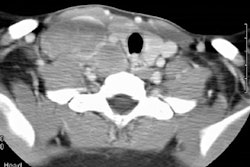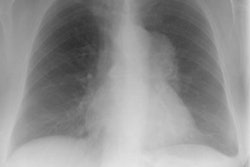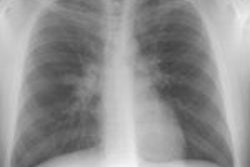Pulmonary lymphangiomatosis
Clinical:
Lymphangiomatosis is a rare systemic mulitorgan disease resulting in marked proliferation and dilatation of lymphatics that tends to involve the chest and mediastinum (pleura, interlobular speta, and mediastinum) [1,2]. The condition is probably congenital, but it presents later (typically in teenagers and young adults) presumably due to hormonal stimulation [1]. patients present with progessive dyspnea that ultimately leads to respiratory failure [2]. Mortality is high because there is no treatment other than conservative measures (drainage of pleural and pericardial fluid) [1,2].
X-ray:
The disorder produces diffuse, bilateral, symmetric interlobular septal and peribronchovascular thickening- sometimes with an upper lobe predominance [1,2]. The thickening is typically smooth, but can sometimes be nodular [1]. Patchy ground-glass attenuation can reflect edema or accumulation of hemosiderin-laden macrophages or hemorrhage [1]. The lymphatic proliferation diffusely infiltrates the mediastinum and thickens the visceral and parietal pleura [1]. A serous or chylous pleural effusion is common and a pericardial effusion is also common [1,2]. Lymphadenopathy is uncommon [1].
REFERENCES:
(1) AJR 2009; Raman SP, et al. Imaging of thoracic lymphatic
diseases. 193: 1504-1513
(2) Radiographics 2012; Walker CM, et al. Tumorlike conditions of the pleura. 32: 971-985



